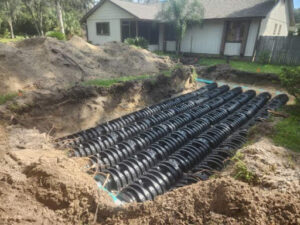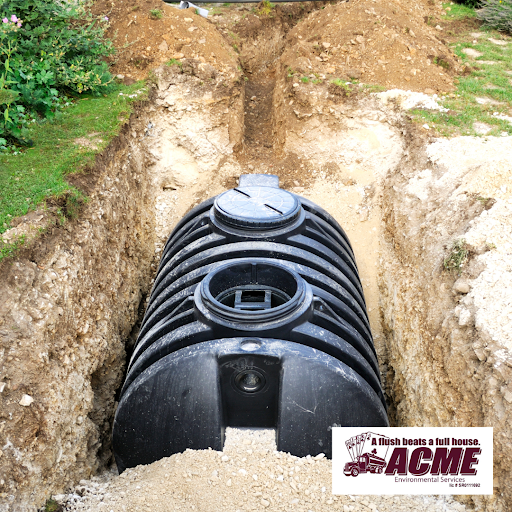When shopping for a new septic tank, you may wonder, “How big of a septic tank do I need?” The pros from Acme share their tips on how to find the best septic tank for your home.
If you’re in the process of building a new home that relies on septic or replacing an old tank, you’ve probably started thinking about what kind of system best fits your property. Mound system or drip distribution? Aerobic treatment unit (ATU) or conventional system? Should the tank be made of concrete, plastic, or fiberglass? There are a number of questions to consider when selecting a new septic system. What about the tank size? Even after deciding upon the type of system, you may have learned that septic tanks also come in different sizes. If you’re wondering, “How big of a septic tank do I need?” Acme can help. Let’s take a look at different sizes of septic tanks and how to determine which will suit the needs of your household.
How Big Of A Septic Tank Do I Need?
Septic tanks come in a range of sizes to accommodate different household needs. Residential septic tanks generally range from about 750 gallons to 1,500 gallons, with 1,000 gallon tanks being the most commonly installed.
How is the exact tank size needed for your home determined? Keep reading to find out.
What Size Septic Tank Does My Home Need?
Common sense might suggest that larger homes need larger septic tanks – and that’s generally true. But home size isn’t the only factor to consider. Several elements influence the size of septic tank you should have installed, including the number of bedrooms, expected daily water usage, and local regulations. Here are a few of the most common factors that determine the right tank size for your home:
Household size – The more bedrooms (or occupants) in a home, the larger the septic tank needs to be. Homes with additional bedrooms are more likely to house more people, which leads to increased water usage. 
Daily water usage – A home’s water usage may increase depending on the number of people who reside in it, but still other factors, such as the number of water-using appliances or the length of showers, also impact water usage. If you tend to do a lot of laundry, take long, hot showers, and have a dishwashing machine, choosing a larger septic tank can help prevent serious septic issues like clogs, backups, and overflow.
Local regulations – Some local health departments and local authorities have minimum-size requirements for septic tanks. When in the process of installing a new septic system, it is important for homeowners to check local regulations to determine what is required for their property.
Professional assessment – While it is helpful to familiarize yourself with tank sizes and types, no one can make a better recommendation than a qualified septic technician. If you have questions or concerns regarding your septic installation, don’t wait to reach out to one of the pros from Acme.
How Big Of A Septic Tank Do I Need To Reduce Maintenance Requirements?
While having an appropriately-sized tank will help you avoid many septic problems, your septic system’s operation is still dependent upon regular maintenance, which includes pump-outs, inspections, and repairs.
Purchasing a new home? The state of Florida requires that new homeowners have a pump-out and inspection performed on their new septic system. If you just received the keys to a new residence, Acme is ready to help ensure your septic system is in great shape from day one.
Need Septic Help? We’re The Right Fit
With the right information, the question, “How big of a septic tank do I need?” is simple to answer. If you need expert advice on tank size, system type, or any part of the installation process, Acme is here to help.
Contact us today for fast, friendly, certified septic care services.


